
I’m at the home of the Australian women’s rowing team and see Georgie Rowe, who appears so devoid of energy that it’s like she’s run a marathon in the desert, shuffling down the stairs. “Thank God that’s over,” the Tokyo Olympian mumbles at a tick past 5pm.
Rowe is among the 25 squad members closing out a typical day at their Penrith training base.
Their training for the day began at 7.20am, when they set off on the Nepean River for a 22-kilometre row. The dew point is high, there’s hardly a cloud in the sky, and over the two-hour period they’re on the water the temperature soars into the high 20s.
As these rowers, whose lives are dedicated to an extreme fitness regime, lift their boats onto their shoulders, carry them down a grassy slope and take up their seats on the water on this particular Friday, I climb into a tinny with the squad’s head coach, John Keogh.
The coach and I head south-west with three pairs: Jessica Morrison and Annabelle McIntyre, Paige Barr and Bronwyn Cox, and Lucy Stephan and Kat Werry.
Three of those six — Morrison, McIntyre and Stephan — are Olympic gold medallists.
Talk about elite company.
Keogh and I cruise along within a skimming stone of the three pairs, the coach relaying instructions through a loudspeaker with a clear and calm voice. The pairs we’re coasting down the river with are “sweeping”, as opposed to “sculling”, meaning each rower has one oar each instead of two. The coach uses terms like “postural awareness”, “connection to the boat”, “long strokes” and “relaxation in the hands”, and they tick along at “stroke 20”, meaning 20 strokes per minute.
These aerobic weapons eyeing the Paris Olympics are so fit that at stroke 20 they’re only operating at about 60 per cent of their heart rate. For that reason, I won’t see anyone spewing up their brekky, but like any other training day, this day is sure to be brutal.
One challenge is physical. As they dip their oars in the river, plough through litres of water with the strength of their arms, shoulders and legs, and flick their wrists — one pattern of movement that’s repeated about 2400 times throughout this two-hour period — their muscles become increasingly heavy and weary. Their lungs work like relentless machines, sucking in crisp air at the foot of the Blue Mountains as oxygen is shuttled to pumping muscles in all parts of their bodies. They’re not going flat chat and gasping for air, but the long grind wears them down. They’re certainly not “merry, merrily” rowing their boats “gently down the stream”.
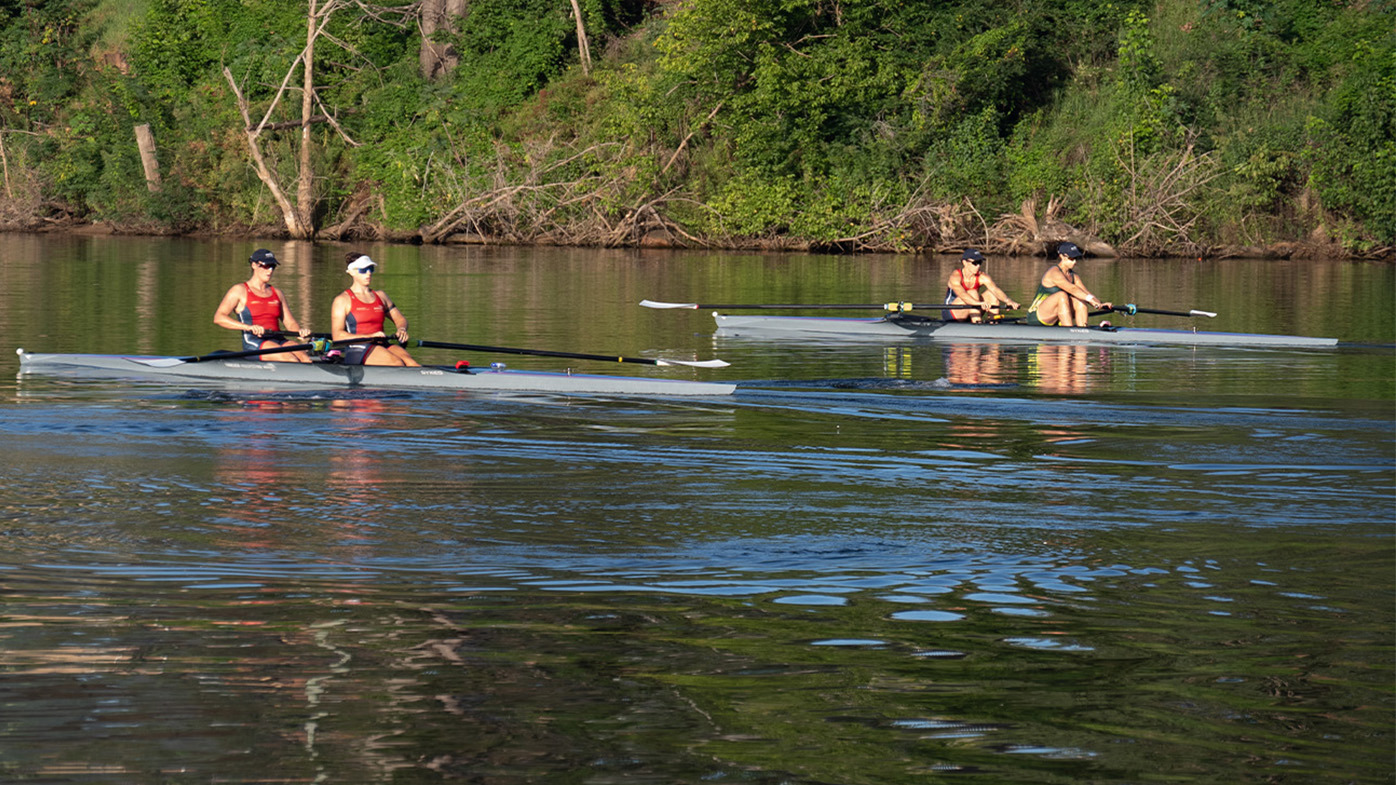

Another challenge is technical. “Me and Paige are really focusing on the process of arms first, then body, but really stretching the knees to hold the length into the front,” Cox explains. “As for the stroke, people always say it’s a really complicated way to put an oar in the water, but … there’s so much that goes into it, so much that can actually slow down the boat, so many opportunities to speed up the boat.”
And the mental challenge — the kind that makes for long faces suppressed by fitness-induced torture — mustn’t be underestimated. There’s little more than an expanse of river water entertaining the rowers’ eyes as they plug away for two hours. The river and surrounding bushland are gorgeous, and there’s a local eagle that greets the rowers, but a 22-kilometre row is a test of sanity. Come the end of a typical week, they’ve racked up 160-180 kilometres on the water, or about 14 hours. Gym work, and a huge amount of it, is additional.
“To perform the best in that Olympic gold medal race, you have to do these kinds of kilometres,” says Olympic champion McIntyre.
“We have one movement pattern and we have one movement pattern that we do over and over again, so that when it comes to that gold medal race with that sort of pressure, even if we have a few nerves, when that buzzer goes we can clear our minds and our bodies can just perform. That’s why we do so many kilometres; when the time comes, it’s instinctive.”
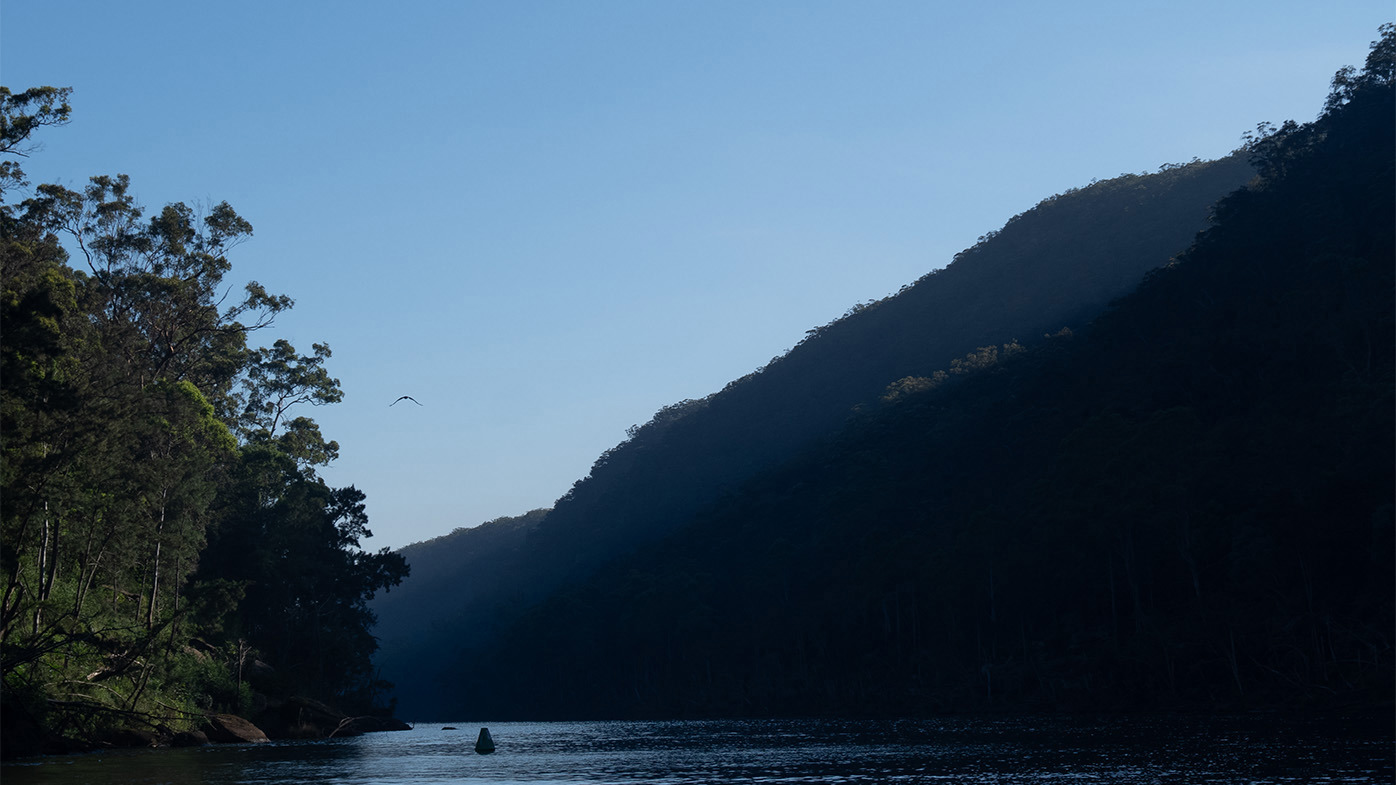

The best rowers remind Keogh of the best players in Aussie rules, American football and tennis.
“The thing I really notice about rowing is the exceptional crews demonstrate that they’ve got time forward regardless of rate,” the coach says, bringing the engine to a rumbling halt as the tinny drifts towards the riverbank at the end of the row.
“So whether it’s aerobic training like today, 20 strokes per minute, or whether it’s race rate, which is 36, 37, 38 strokes a minute, world-class crews demonstrate an illusion of time forward.
“As a lover of sport, I think the great players — the Wayne Careys, the Scott Pendleburys — have got an illusion of time. Roger Federer always had time to play his shots. The great quarterbacks … I watch a lot of NFL. Patrick Mahomes — they just have time.
“One of the things that a lot of the athletes do here is create this time — time to let the boat work for them, time to get more out of the boat on the recovery.”
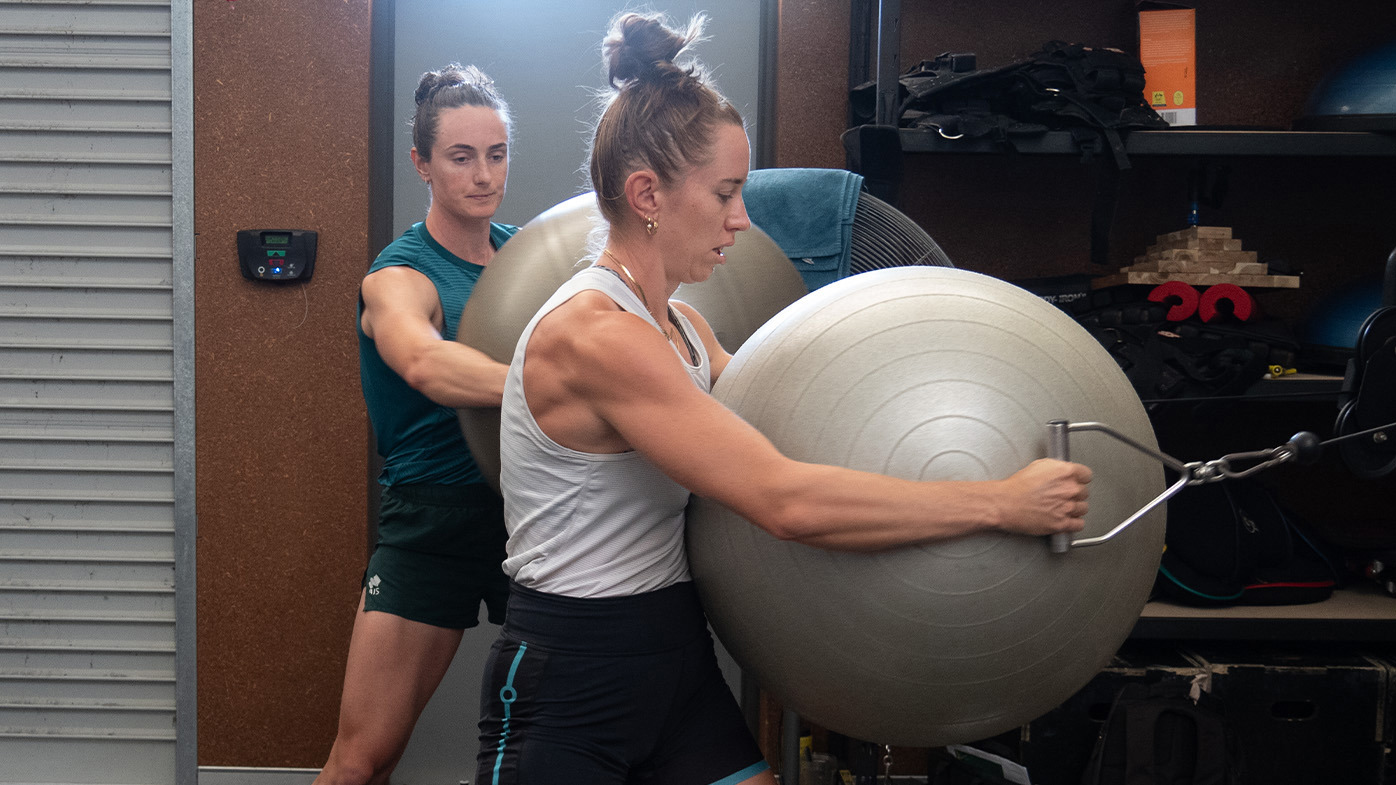

It’s about 9.30am when John and I, chatting in the tinny, trail the three pairs of rowers back to shore.
The first of the rowers’ three workouts for the day is done.
As is common among Olympic athletes, some of them pull out their laptops and squeeze in some uni work, tapping away while refuelling with sports drinks, muesli bars, muffins and noodles. Being an Olympian looks glamorous when they’re standing on the podium with shiny gold medals, but it’s not all bright lights and flashing cameras.
They punch out an hour of core work in the middle of the day, lugging plates and wrestling exercise balls in a tightly confined room reeking of sweat.
A second break follows, giving the rowers a chance to have lunch and take a nap, before they return late in the afternoon for an hour on the rowing machines.
The “ergs”, as they’re commonly referred to, are notorious.
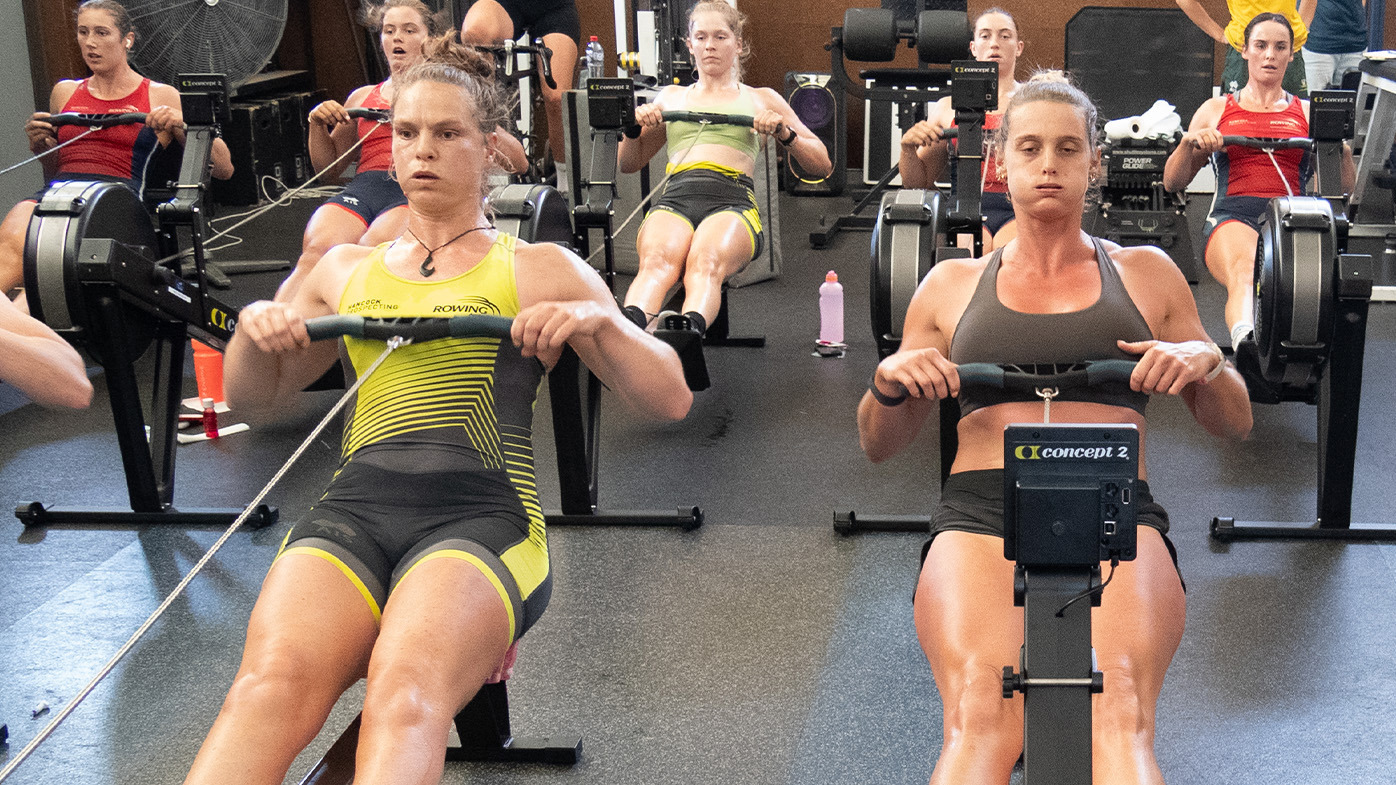

They thrash themselves on the ergs for an hour, only pausing briefly midway through to have the lactate in their blood tested. If the build-up of lactate isn’t high enough, they’re told to row harder.
“It’s kind of like that ‘happy hurt’,” Rowe says.
“I feel like it’s a bit of a shared suffering amongst the team. Tonight’s the perfect example; you’re in a big, hot, sweaty room, there are 25 girls on rowing machines just going as hard as they can for 60 minutes non-stop. It’s pretty amazing. The amount of power and passion in the room is so inspiring.”
A huge amount of data is collected as the rowers go about pursuing their Olympic dreams. Stroke rate, boat speed, rate of perceived effort, lactate, calories, hydration, sleep and many more factors are logged and analysed by the squad’s high-performance team. So high are the stakes in a sport where the difference between winning Olympic gold and falling short can be 0.01 of a second.
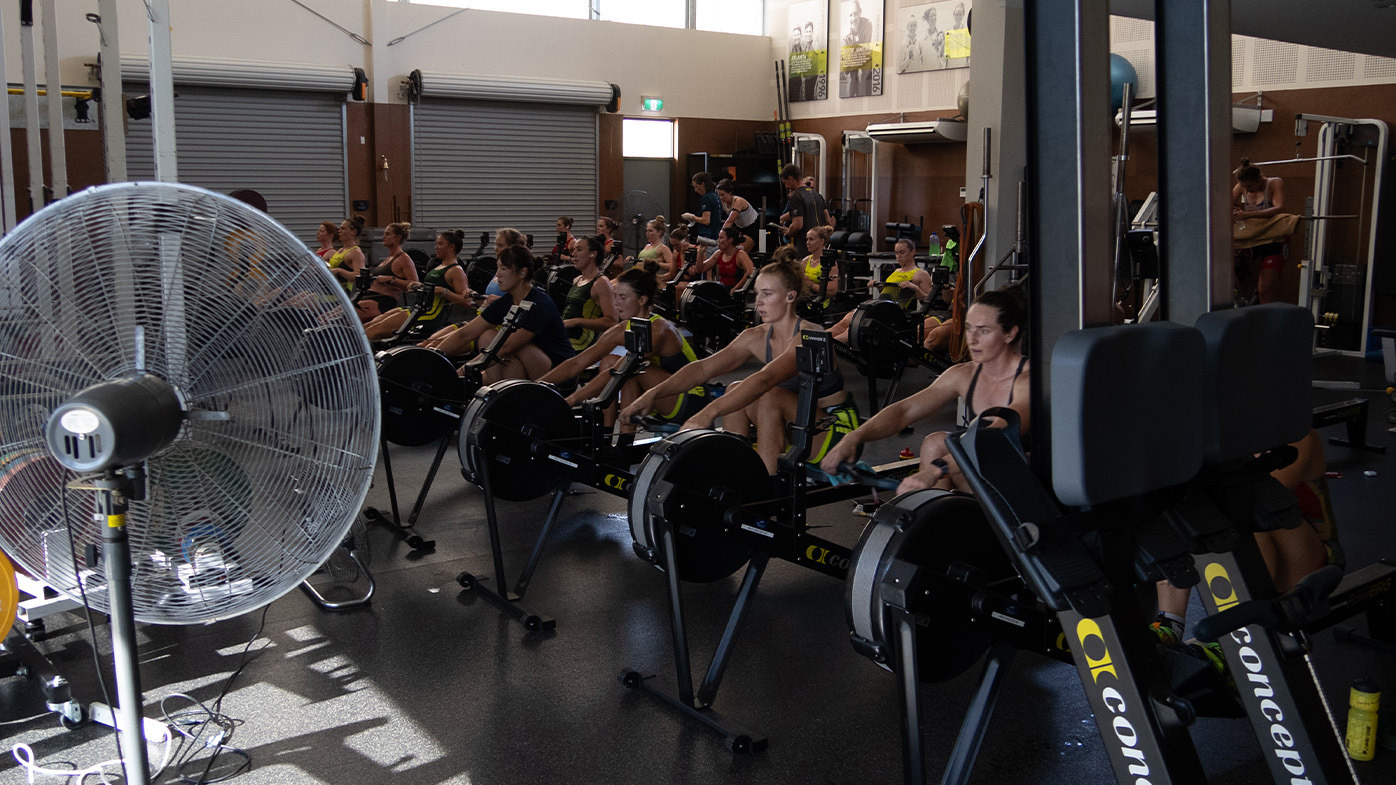

Three inspirational pictures hang over the rowers as they hammer away in the gym — three prints honouring every Olympic gold medallist Australian women’s rowing has produced. On the left is a picture of Kate Slatter and Megan Still, the pair that clinched gold at the Atlanta 1996 Olympics; in the middle is Kim Brennan, Australia’s single sculls champion at Rio 2016; and on the right are the four women who combined for glory at Tokyo 2020: Morrison, McIntyre, Stephan and Rosemary Popa.
Now a powerhouse duo, McIntyre and Morrison shape as a genuine gold medal shot in the pair event at the Paris Games.
“I look at that every day,” Morrison says, gazing up to the back wall.
“You etch your name in history … For all the work we do and investment that goes into rowing, all the talent that’s captured, to produce seven people that have ever won a gold medal just shows you how tough it is.”
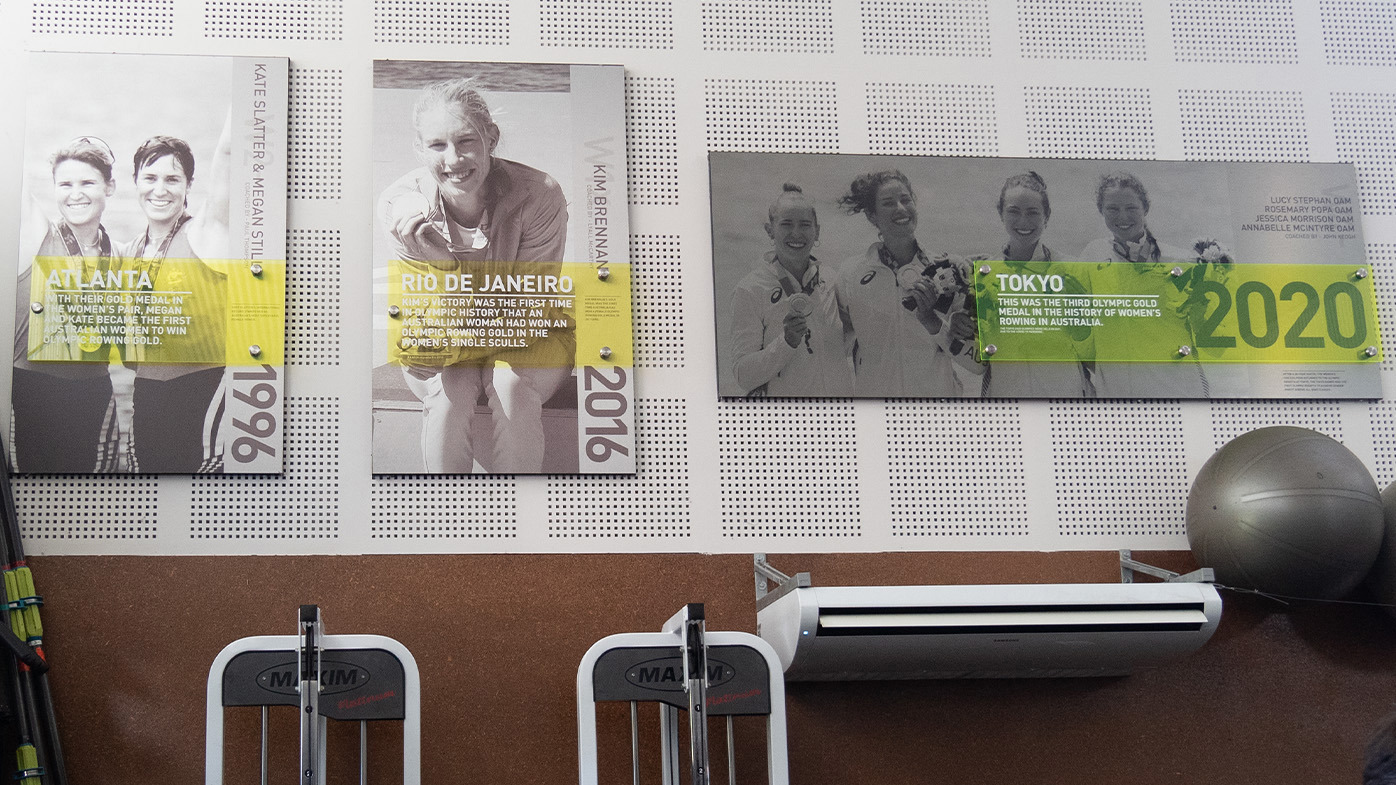

They tackle more or less the same training program six days a week, hitting the water around 7am and calling it a day around 5pm.
Thousands of hours on the Nepean River and in the gym will culminate in about six minutes — the most high-pressure six minutes of their lives — at the Paris Games, when the buzzer goes off at Nautical Stadium and they go hammer and tongs for 2000 metres.
“That’s the bizarre nature of our sport,” Keogh says.
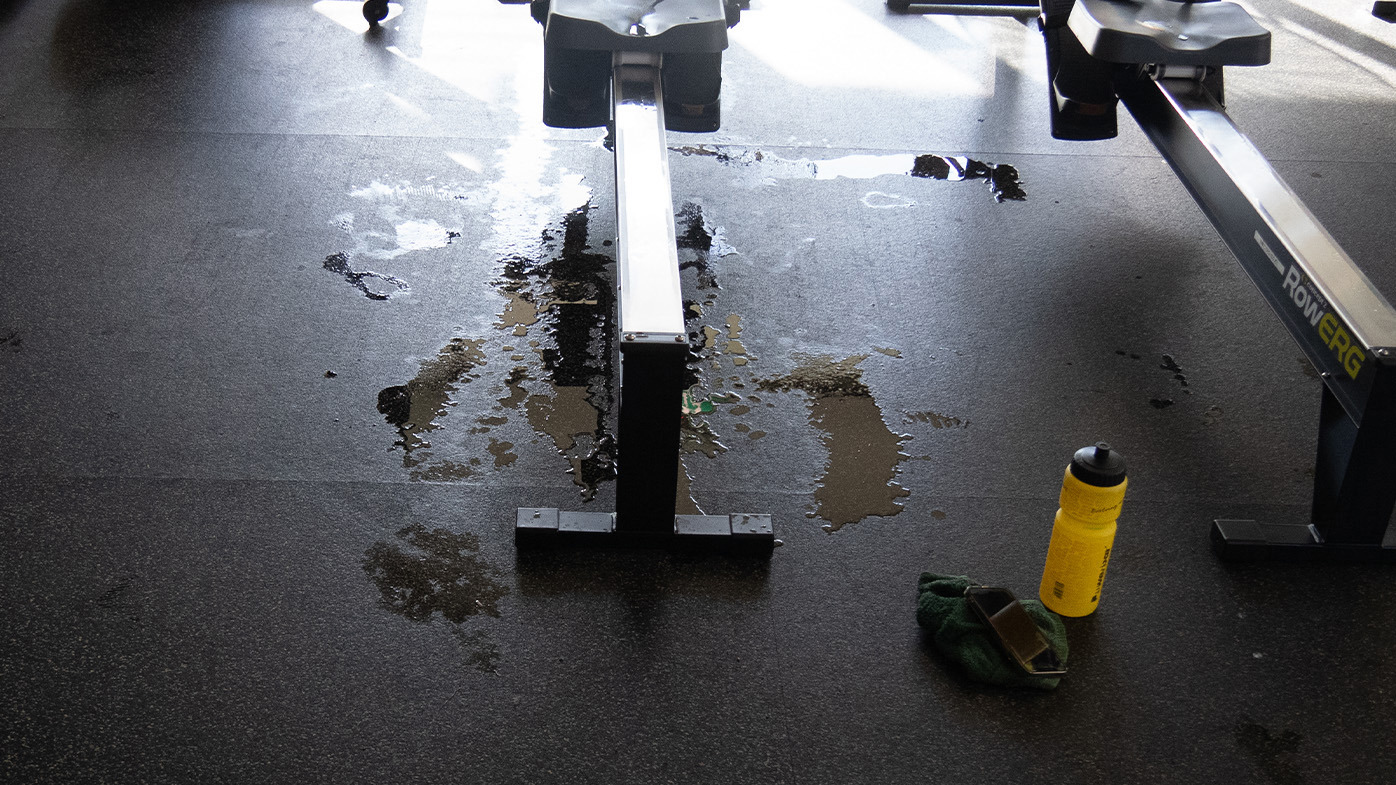

“You’re trying to do something pretty amazing and that’s winning an Olympic gold medal.”
There’s a palpable sense of achievement as the squad’s time on the rowing machines hits 60 minutes, marking the end of another dreaded ergs session and gruelling training day.
Rowe and Jacqui Swick, seated side-by-side on the ergs, get up and give each other a proud and triumphant high-five.
“Incredible,” I say to myself, stunned and inspired.